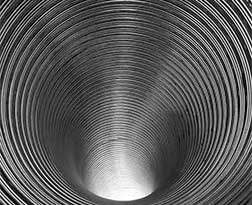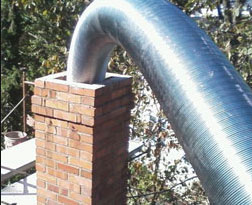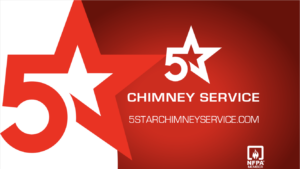Want a Safer, More Efficient Chimney? It May Be Time for a Chimney Relining
Unlined chimneys or damaged flue liners are not only a potential fire hazard, but they may be a carbon monoxide issue waiting to happen. Why?
The chimney liner’s job is to contain the heat and byproducts of combustion – like carbon monoxide – and remove them from the home.
A properly sized and well-insulated liner will keep heat from transferring to nearby walls and framing, which minimizes your risk of house fire when lighting a fire in your fireplace. If it’s in great condition and free of gaps, cracks, and openings, the liner will also prevent carbon monoxide from entering your home when smoke is moving through the chimney.
But when a chimney liner is damaged, its ability to effectively protect you against house fires and carbon monoxide is compromised.
The good news is that here at 5 Star Chimney Service, we use the best lining products in the industry, with warranties to match.
We offer everything from light wall liners to heavy wall liners and double wall liners. Our liners range in thickness from .005 all the way up to .015, so no matter what your system needs, we’ve got it. We also offer flex liners, smooth wall liners, and rigid liners, so no chimney is off-limits.


HeatShield® – A Chimney Restoration Solution
If you have a clay tile liner that is damaged, relining with a metal liner may not be your only option. We also offer HeatShield®, which is a cost-effective solution to chimney liner damage that eliminates the unnecessary destruction that typical clay tile removal can cause during a reline.
HeatShield® is a cerfractory sealant that’s used to seal gaps, cracks, and openings in a clay tile liner, so that it can be safely used again. The HeatShield® product repairs and insulates damaged liners, providing a smooth, smoke-tight surface that won’t allow heat or gases to transfer to nearby walls and combustibles.
In some cases, we may apply the product to a specific area of the chimney liner, but it can also be applied to the liner in its entirety, if necessary.
But it’s not for everyone. This technique may only be advantageous in certain conditions. If you’d like to learn more about HeatShield® and find out if it could be a good option for your chimney, just reach out. We’re happy to take a look.
Something to Consider When Relining Your Chimney
Every chimney lining job varies because the needs of each chimney system vary. So, when having your chimney relined, be certain that you’re using a company that’s familiar with the various alloys that are relative to each project.
Relining a chimney requires vast industry knowledge of codes, standards, metallurgy, and the engineering of the appliance in question.
What can go wrong if you install the wrong liner for your system? Here are just a few examples:
- If you use the incorrect diameter, the chimney may not draw adequately – which means you won’t get the high performance you expect from your fireplace.
- If you use the wrong alloy, your chimney liner may disintegrate in a very short period of time – which means you’ll be paying for another one in no time.
- If you don’t use insulation that is listed for use with a particular system, your system may not function properly – which means using it could be dangerous or just plain frustrating.
So, don’t leave anything to chance. Use 5 Star Chimney Service for your chimney reline. We’re New Englands chimney experts! Call or request an appointment online today. We’re here to help!
Chimney cap and damper replacement rank at the top of the list of chimney repairs that are critical to safe, efficient chimney function.
